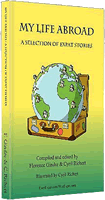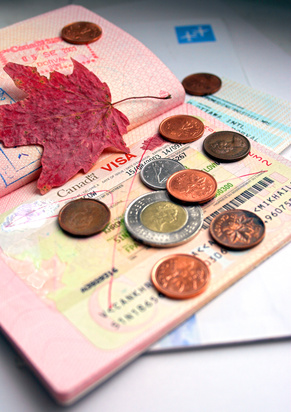Customs and Duty-Free

Imports & Duty-Free
If you are moving to Canada for the first time, your personal and household effects can be moved to Canada duty-free if the goods were owned before arriving in Canada and if you are taking up residency in Canada.
If you intend to live in Canada for 12 months or longer you can include the following personal and household effects in your duty- and tax-free entitlement:
- Clothing and linen
- Furniture
- Furnishings
- Applicances
- Silverware
- Jewellery
- Antiques
- Family Heirlooms
- Private collections of coins, stamps, or art
- Personal Computers
- Books
- Musical Instruments
- Hobby tools and items
- Personal vehicles (manufactured in the US or Canada)
- Pleasure boats and trailers to carry them
- Mobile trailers less than 9 feet in width
- Utility trailers
- Motor homes
- Private aircraft
- Stand-alone tool sheds or garages
When you move to Canada, you can import 1.5 liters of wine or 1.14 liters of alcoholic beverages or 8.5 liters of beer or ale to Canada duty-free. You may also import 200 cigarettes, 50 cigars, 200 grams of manufactured tobacco, and 200 tobacco sticks to Canada duty-free.
If you are importing more than $10,000 CAD (or its equivalent in a foreign currency) you must report the amount to a Canadian Border Services Authority office at an airport or point of entry.
Customs
Customs must be cleared at the first point of entry to Canada, such as an airport.
To clear customs, you must attend a meeting with a local customs official. You will be required to present the following to claim duty free
- Your passport
- Completed B4 Customs form
- Completed B4A Customs form for goods to follow at a later date (if applicable)
- Inventory of imported goods (2 copies)
You must declare all foods, plants, animals, firearms, explosives, and ammunition when entering Canada. In Canada, if you are unsure whether or not you should declare something, it is better to declare it than not.
All household and personal effects imported to Canada are subject to physical inspection by the Canadian Food Inspection Agency (CFIA). Any items that may have come into contact with soil and vegetation (garden equipment, bicycles, shoes, vacuum cleaner bags, golf clubs, etc.) will be inspected. You should thoroughly clean such items before packing and shipping them to avoid extra cleaning costs at Canadian customs.
If you are arriving by air, present your inventory list to a customs official at the airport and advise them that you have goods to follow. Even if you are not bringing anything with you to Canada initially, you must present a customs official with this inventory list. Only goods on this inventory list will be considered duty-free imports.
If your goods are arriving in Canada after you do, some moving and relocation services will act as an agent on your behalf to assist you in clearing customs and creating inventories.
Inventory
Whether you are hiring a moving or relocation company, or moving your goods to Canada yourself, you must compile a complete inventory of all the household goods and effects you are importing to Canada.
Inventories do not have to list individual items, but the more detailed an inventory list, the easier it will be to obtain customs clearance.
You will be provided with B4 and B4A inventory forms to fill out at a customs office upon your arrival in Canada. However, you should have your own inventory list with you to make this process fast and efficient.
Canadian Border Services requests that your inventory list be divided into two: goods you are bringing with you on your person, and a list of goods to follow or arrive in Canada after you. You must provide the value, make, model, and serial number of goods that will arrive in Canada after you.
An inventory list may look like this:
Arriving with me:
- Box 1 – women’s clothing
- Box 2 – men’s and children’s clothing
- Box 3 – pet bed and toys
Arriving with ACME International Shipment Company on March 2nd, 2012:
- Box 1 – clothing and shoes
- Box 2 – books and CDs
- Box 3 – artwork
- Box 4 – children’s toys and clothing
- Box 5 – Sony Portable DVD player, Model # DVP-FX930, Serial No. 0091028829, Value €229.
Cars
Transport Canada imposes restrictions on the importation of cars to Canada. Vehicles manufactured for sale in countries other than Canada and the United States do not comply with the Canada Motor Safety Act and cannot be imported to Canada. The only exceptions to this are vehicles 15 years old or older that have a statement of compliance affixed by the original manufacturer, or vehicles being imported to Canada temporarily.
Vehicles imported to Canada are subject to provincial sales tax and safety requirements. Generally you do not have to pay duty on vehicles imported for personal use that are manufactured in the United States.
Once your car has been imported to Canada you must register it with your provincial or territorial authority and have a safety inspection conducted.
Medications/Prescriptions
Visitors to Canada may bring into Canada, on their person, a single course of prescribed or over the counter treatment or a 90 day supply based on the directions for usage, whichever is less, of a prescription or over the counter drug, plus one additional course of treatment or 90 day supply. The drug must be for the individual’s personal use, or for a person for whom they are responsible for and travelling with.
Drugs must be shipped/carried in hospital or pharmacy dispensed packaging, original retail packaging, or have an original label affixed to it which clearly indicates what the health product is and what it contains. When importing medication to Canada you may also want to carry supporting documentation such as a copy of your prescription or a letter from the prescribing physician.
By Jess Gerrow, who traded city life in Canada for island life in the Mediterranean two years ago. She is a postgraduate marketing student, blogger, and freelance writer.
- My Life Abroad -
A selection of expat stories

"A fun compulsive read!"
J. Matcham, Amazon
"I strongly advise people ready to live abroad to read this book!"
Patrice, Amazon

 Obtaining a Work Visa for Canada
Obtaining a Work Visa for Canada
 AGS Worldwide Movers
AGS Worldwide Movers Fexco payment solutions
Fexco payment solutions 1stMove Car Shipping
1stMove Car Shipping